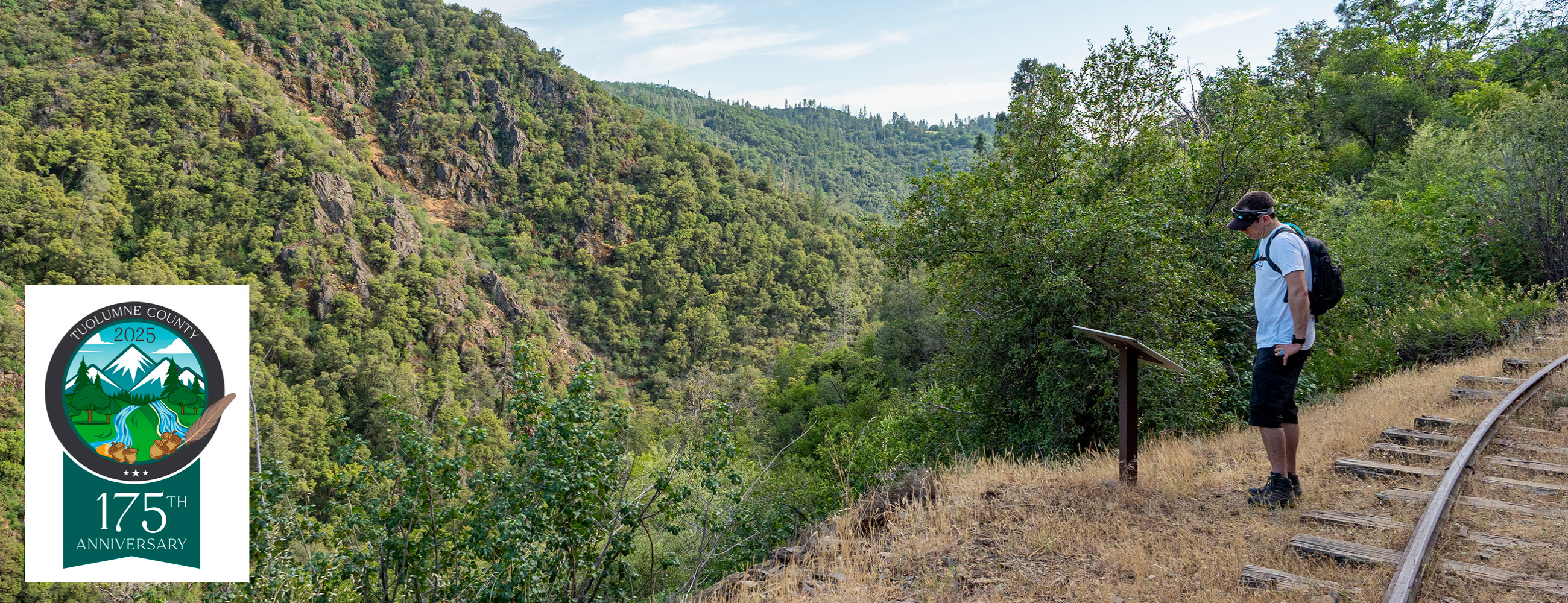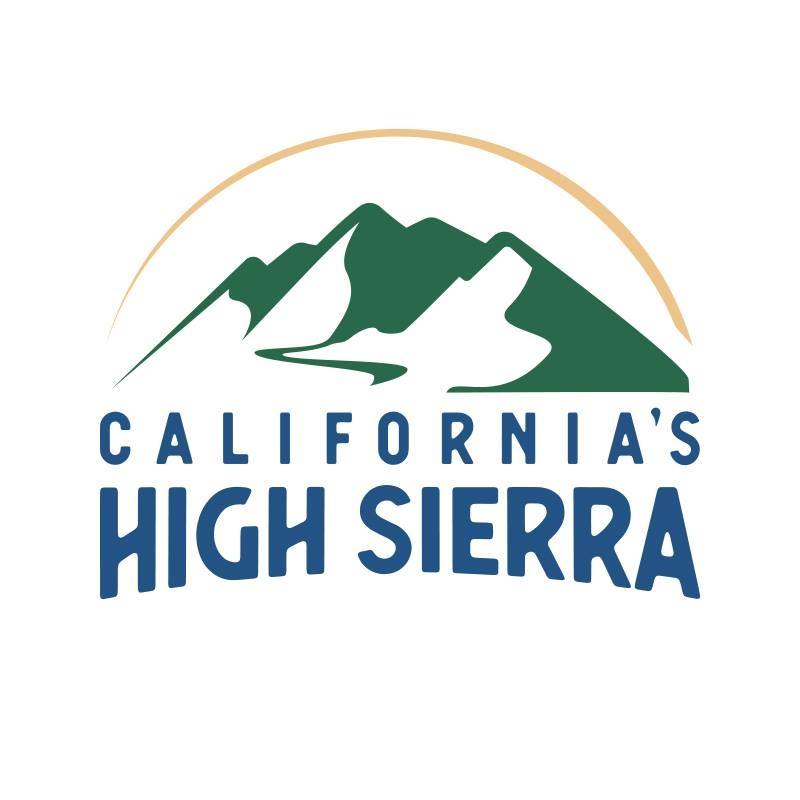Written by Damian Riley, an adventure photographer and Yosemite National Park Native (American) Miwok.
 The Grand Canyon of the Tuolumne hike is without question one of the most epicly stunning hike-through trails in Yosemite National Park, within the boundaries of Tuolumne County. The earliest tales of this journey are from the local Mi-Wuk and Piute Native Americans, who traversed these canyons for millennia as trading routes between Mono Lake and Hetch Hetchy.
The Grand Canyon of the Tuolumne hike is without question one of the most epicly stunning hike-through trails in Yosemite National Park, within the boundaries of Tuolumne County. The earliest tales of this journey are from the local Mi-Wuk and Piute Native Americans, who traversed these canyons for millennia as trading routes between Mono Lake and Hetch Hetchy.
 Spring and late summer are the optimal times of year for this hike, with alternative views to either season. Spring hikers can expect raging rivers and several water crossings with portions of the trail even submerged. And late summer hikers enjoying crystal clear, slow moving rivers and swimming holes. Midsummer is of course also very doable, but you’ll have to contend with some pretty hot mid-day heat and quite a bit of exposure as you hike.
Spring and late summer are the optimal times of year for this hike, with alternative views to either season. Spring hikers can expect raging rivers and several water crossings with portions of the trail even submerged. And late summer hikers enjoying crystal clear, slow moving rivers and swimming holes. Midsummer is of course also very doable, but you’ll have to contend with some pretty hot mid-day heat and quite a bit of exposure as you hike.
There are 2 options for this thru-hike: Tuolumne Meadows to White Wolf Campground or vise-versa. Given the rather intense elevation gain for those hiking Tuolumne Meadows to White Wolf, most hikers (including ourselves) opted for the increase in elevation over a greater distance, rather than the long trek down and short and brutal hike up to White Wolf.

The terrain is vast with scale that rivals proportions of the famous Yosemite Valley. There was no mistake why John Muir described this canyon as “even more grandeos than Yosemite Valley”, and when you include Hetch Hetchy into the equation, that sentiment is very real.
If I were to rate difficulty of hikes in Yosemite 1-5 (easy to hard), the Grand Canyon of the Tuolumne Hike would land in the number 3 spot, regardless of the starting point. There are few trails in Yosemite that span this distance with this much elevation gain/loss. The saving grace to the endurance required, is that the trail goes along the Tuolumne River nearly 80% of the way.

Other guides and official park maps list the mileage of this trip differently, and the actual mileage signs on the ground are without any doubt very inaccurate. Start to finish we calculated the entire distance hiked at just around 47 miles. That includes all of the trips to the river for water, a little side exploring, and the general necessity of enjoying yourself and not spending every second on the trail.
The best way to conquer this as a hike-thru is with 2 vehicles. Having one vehicle drop off at White Wolf Campground, after that both drivers drop the second car off in Tuolumne Meadows, then the 2nd vehicle drives back to White Wolf with everyone in the car to park there. That way when you exit in Tuolumne Meadows you don’t have to try hitchhiking back to White Wolf or relying on the sometimes inconsistent buses that make their way through in summer.
The start of the trail begins with a mellow meander for about a mile on a park service dirt road before you hit the actual wilderness trailhead. From that point on, you continue on the actual trail past Hardin Lake, where you can take a stop to enjoy some of the plant and wildlife that call Hardin Lake home.
As you make your way down on the trail, you’re going to be gradually losing elevation as you make your way to the brim of the canyon. Reaching the canyon rim outlook will be obvious, and the switch back decent becomes a lot more aggressive. Some experienced hikers of Yosemite trails have said that the White Wolf descent (or ascent) is one of the most challenging in the entire park trail system. Either way you go, it’s a long, slow grinding pace that wears you down by the sheer extreme elevation gain or loss.
Eventually you drop down into the Tuolumne River canyon, looking out you can see the tail end of Hetch Hetchy down the canyon way. The trail evens out along the Tuolumne River and gradually follows it westward towards Pate Valley, which will end up being our campsite for the first night. Of course we had to stop to try out a little rock climbing before we got to camp and cross some partially washed out bridges from the last years major storm. After setting up our overnight site, we made food and tried to get a good night's sleep, but the allure of the stars kept us up for a little while.
We awoke the next morning to a beautiful sunrise and took our time getting packed up and ready. A dip in the Tuolumne River was just what we needed, and the cool water helped stiff joints and sore feet get a nice reprieve.
Back on the trail we made our way up a few miles before we encountered one of the most epic swimming holes we had ever seen in Yosemite, which reveals itself only in the late summer when water levels recede. Deep crystal green pools with vast caverns underwater, carved to smooth perfection through half a million years of slow liquid erosion. In an instant our bags were off and we jumped in the water. The next few hours were spent exploring the underwater caves and jumping off the rocks into the deep pools.
Our next camp for the night was near Waterwheel falls and the distance to that point from the swimming hole was at minimum 8 miles of fairly intense elevation gain of nearly 2,000ft. Most of the day was spent winding up along through the Tuolumne River canyon, then entering the deep elbow of the infamous Muir Gorge and looking up at granite walls that seemed in equal measure with those in Yosemite Valley. An almost contrasting dilemma of the senses, where claustrophobia and Agoraphobia intertwine. In the presence of these towering walls, you’re only left with the absoluteness of natures ceremony. And the sun was setting as we crested from the abyss in the Muir Gorge..
It was now dark and fatigue was starting to creep in from the midday sun and heat. As we neared the base of Waterwheel falls, a campsite of notable proportion presented itself. We took the opportunity to set up tents, make food and listen to the sounds of the river just around the bend. Looking up at the night sky, reminded us all of why we love Yosemite and especially the Tuolumne County side of it. We were reminded that we had only seen 3 other people out here this entire time, and nearly had Yosemite to ourselves.
Our only alarm for the next morning was another amazing sunrise. Breakfast cooked, water filtered and camp dismantled, we once again hit the trail, onward to Glen Aulin High Sierra camp. Five more miles and another near 2,000ft in elevation gain was ahead of us. The journey was a little slower than the previous day and we tried to enjoy the scenery, stopping atop Waterwheel Falls to filter more water and get the rare opportunity to sit on top of a waterfall that any other time of the year would be ten times larger in water volume.
The next portions of elevation gave way to even more epic granite domes and boulder debris. We could not help making comparisons in rock features to those in Yosemite Valley. The next plateau stretched into beautiful meadows of giant ferns and corn lilly’s. Features of high elevation meadows that are more typical of the Yosemite high country. At nearly 8,000ft, we could for the first time start to feel the elevation with our steps.
As the cascading waterfalls below Glen Aulin came into view, we knew the next swimming opportunity was moments away. Glen Aulin was as stunning as I remembered it, a high country camp in Yosemite that offers a little mix of glamp, camp, waterfalls and high mountain peaks in every direction. The waterfall and pool at Glen Aulin was the freezing cold therapy we desperately needed for our feet and sore muscles.
Much contemplation was made to make a camp near Glen Aulin, or make the 7 mile push out to Tuolumne Meadows. The collective decision was made to take some deep breaths and exit out that day, making it back to the car before dark. As we loaded up our packs and put our feet back on the trail, it was obvious that the idea of hiking another 7 miles was mentally more simplified than the reality of our current physical condition. This is when all that candy you pack really comes in handy. With zero reserves of protein energy left, you resort to the pure and simplified method of sugar power.
The journey from Glen Aulin to Tuolumne Meadows is legendarily beautiful. Written about countless times over the past 50 years, and a favorite path for early alpine mountaineers, photographers like Ansel Adams and of course John Muir himself and writers like Jack Kerouac. A few jaunts of elevation eventually lift you up even to Tuolumne Meadows and the remaining journey is paths of well worn granite sand and exposed granite domes in the distance. Of course more familiar summits can be spotted not far off, like Cathedral Peaks and Pothole Dome.
The last treeline was in sight and beyond we could see Tuolumne Meadows. The sun was setting and the calm streams and fields of tall grass were a welcome sight. The most stunningly beautiful sights in Yosemite are reserved to Tuolumne Meadows, and as we watched the last sunlight fade behind the high mountain peaks, we unloaded our packs from our backs and jumped in our parked van. We all wished we had another night to spend in Tuolumne Meadows and vowed we would be back up here again very soon.
On the drive home, a unanimous vote was made to make a stop in Groveland, CA to get some sandwiches and coffee. Our lust for life and creature comforts was in full effect, and Groveland always makes the perfect stopover point to refuel and replenish, before and or after exploring Yosemite.
Next time you’re planning a Yosemite adventure, we would highly recommend exploring Tuolumne Meadows and this epic back country hiking trip!
For more about Damian Riley, check out RiLee Photography.
Visit www.VisitTuolumne.com to find lodging, including quaint B&Bs, cabins and more, for your trip to Tuolumne County.














